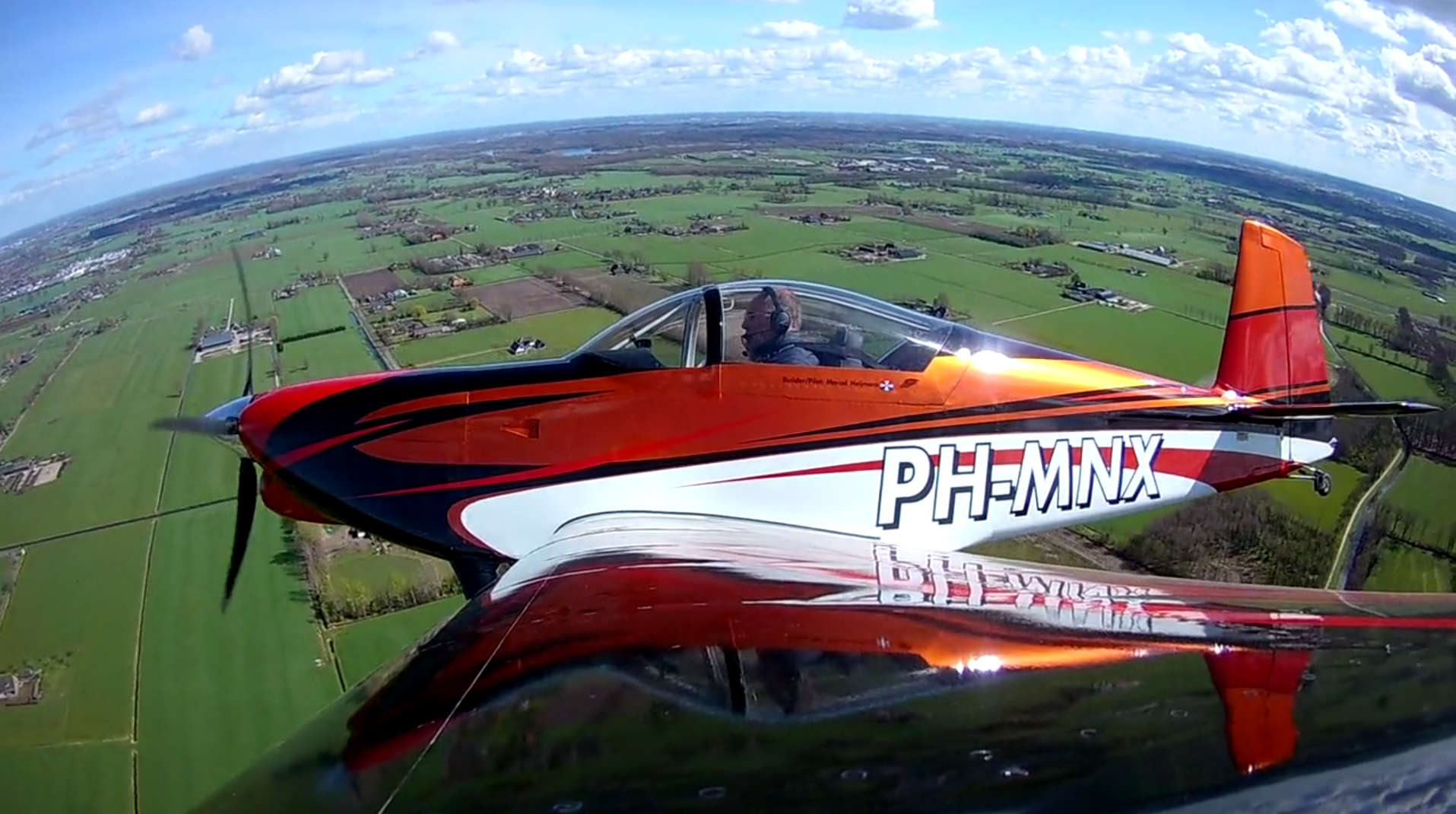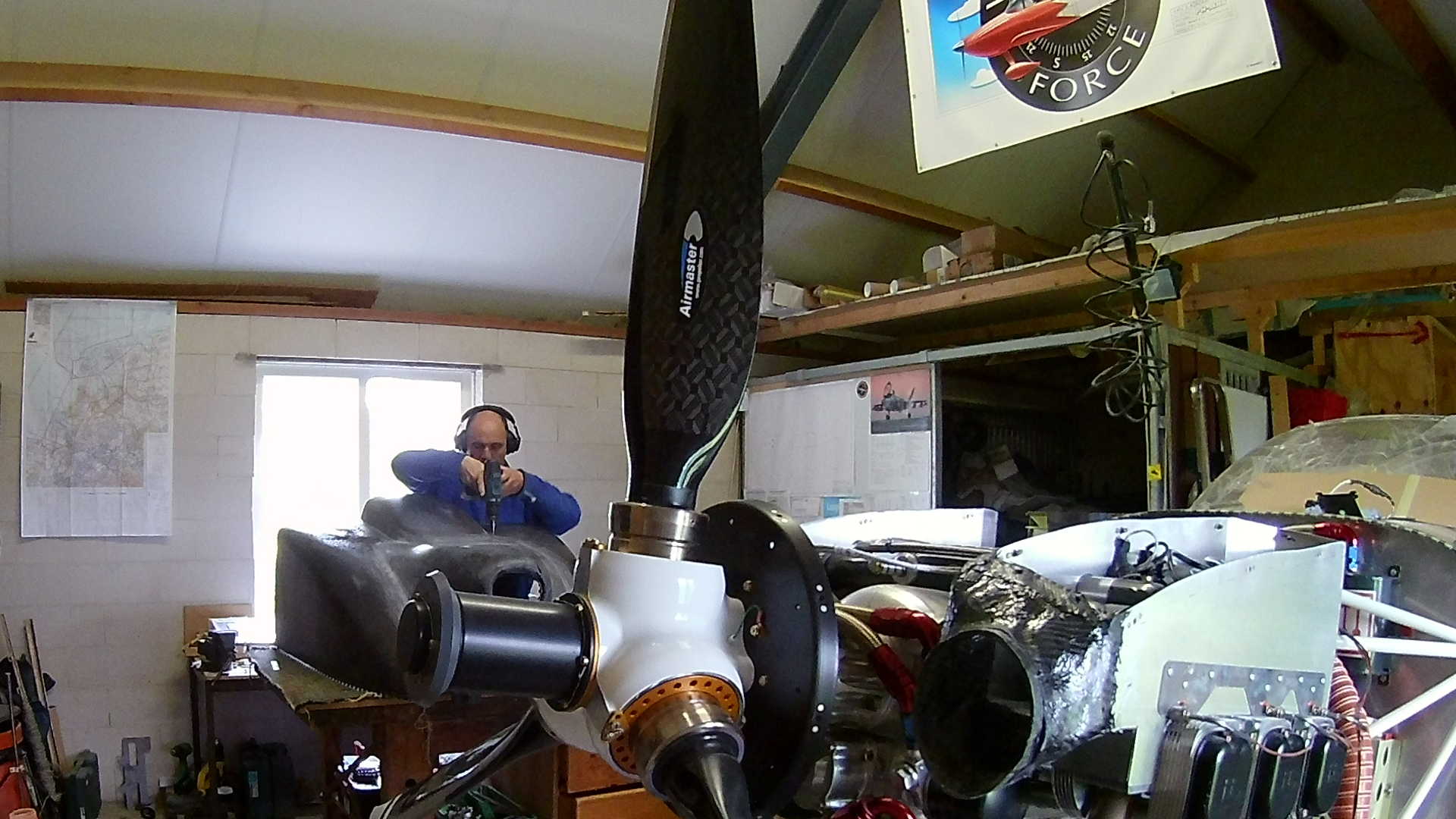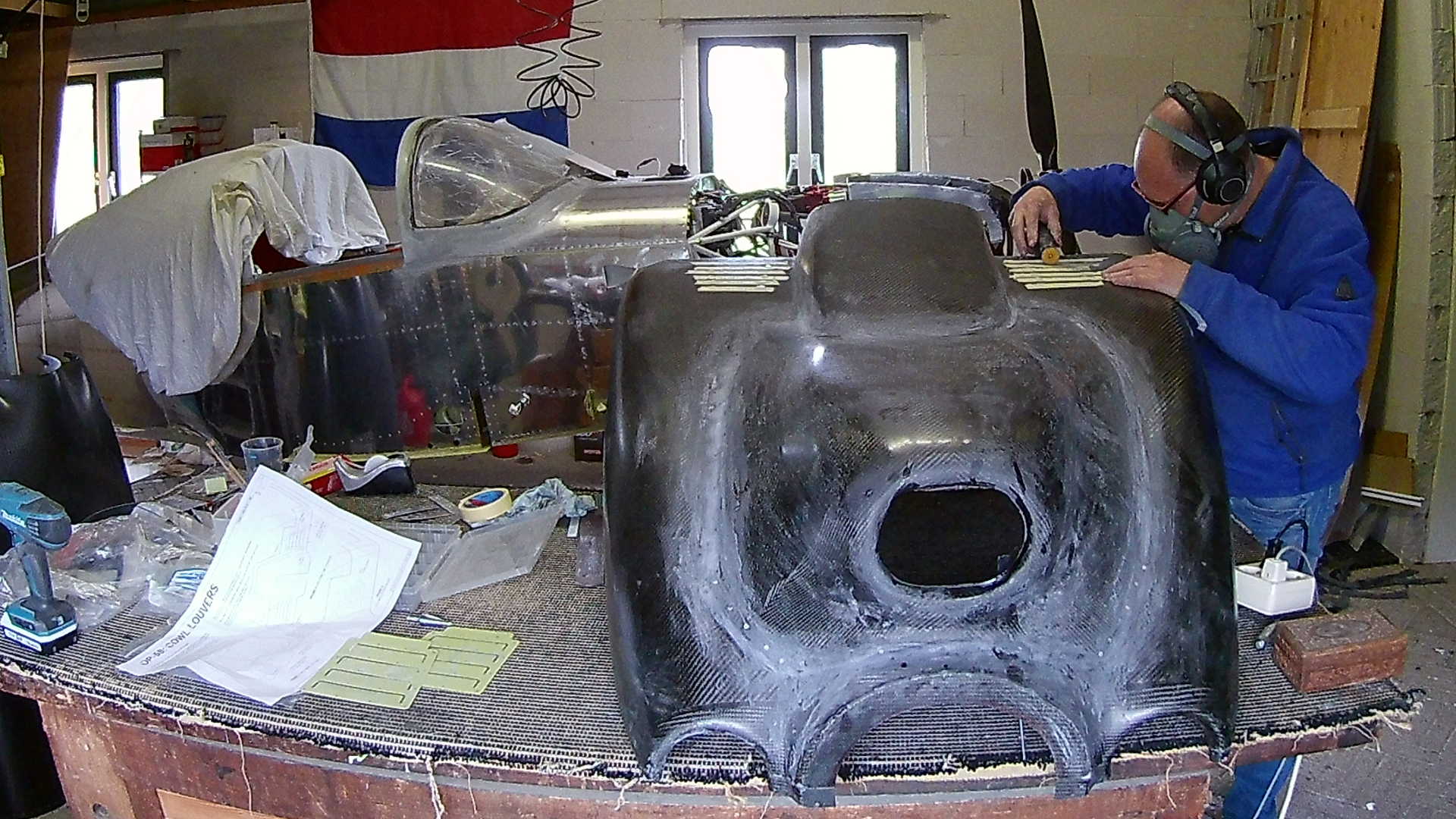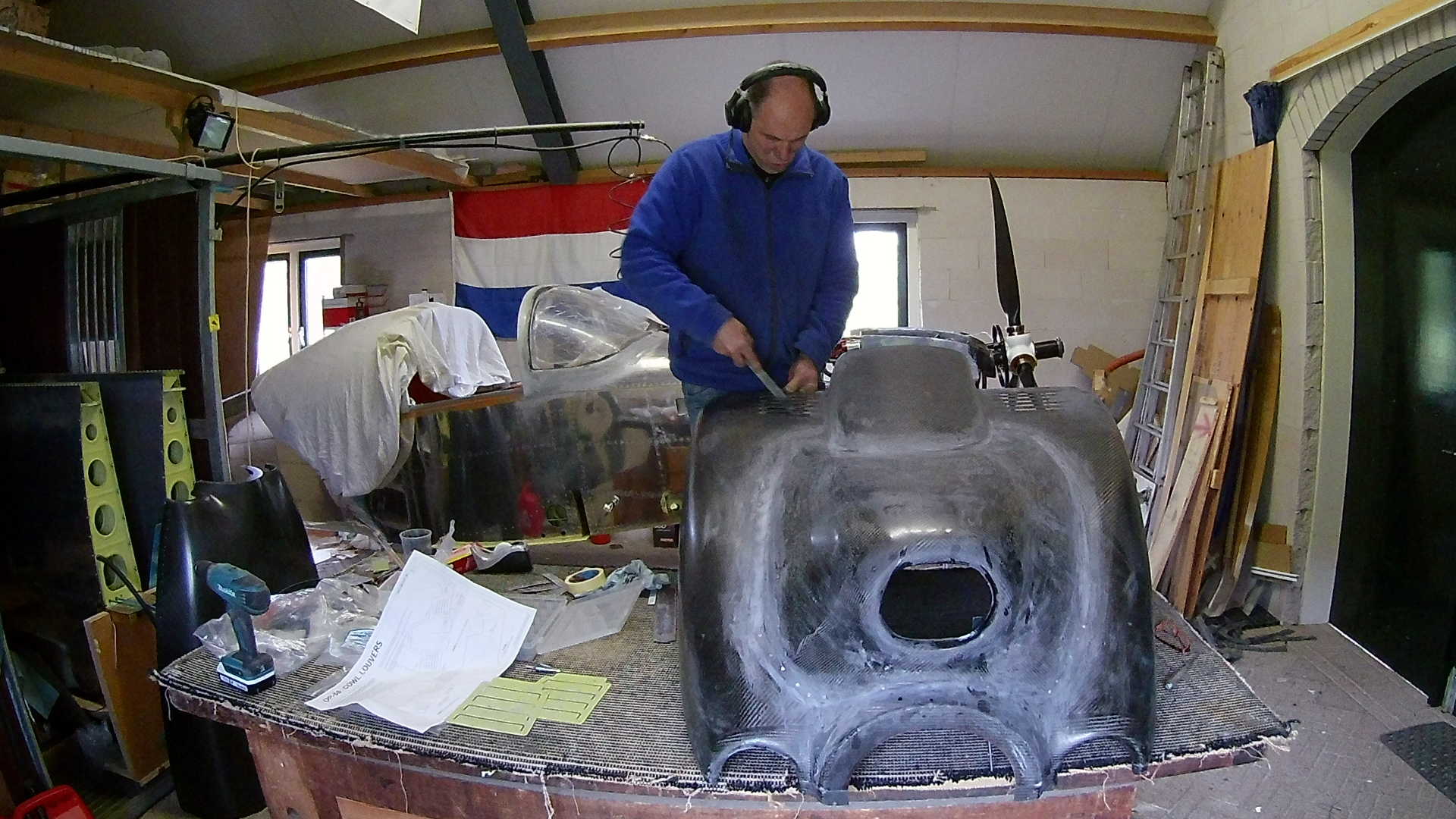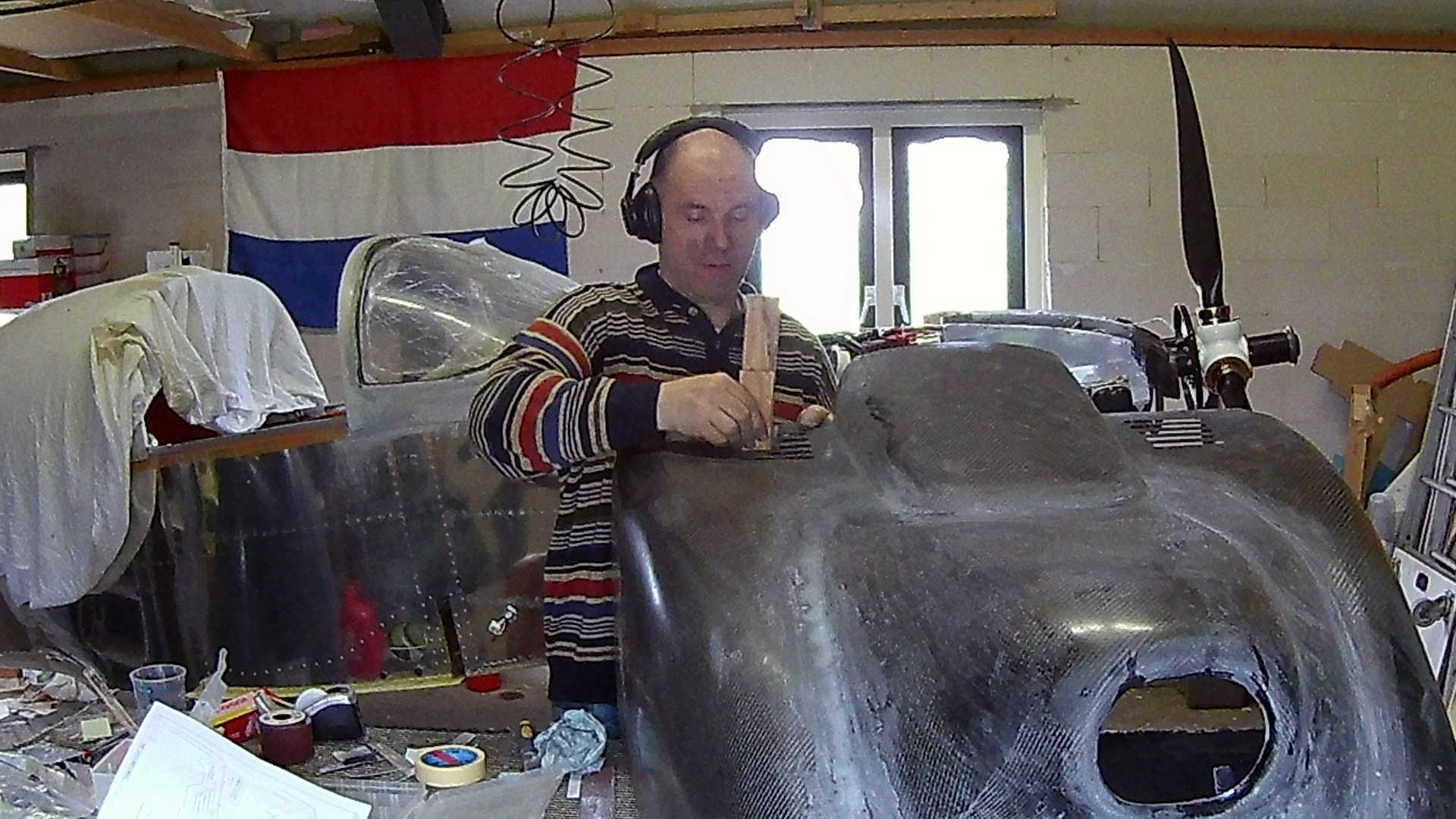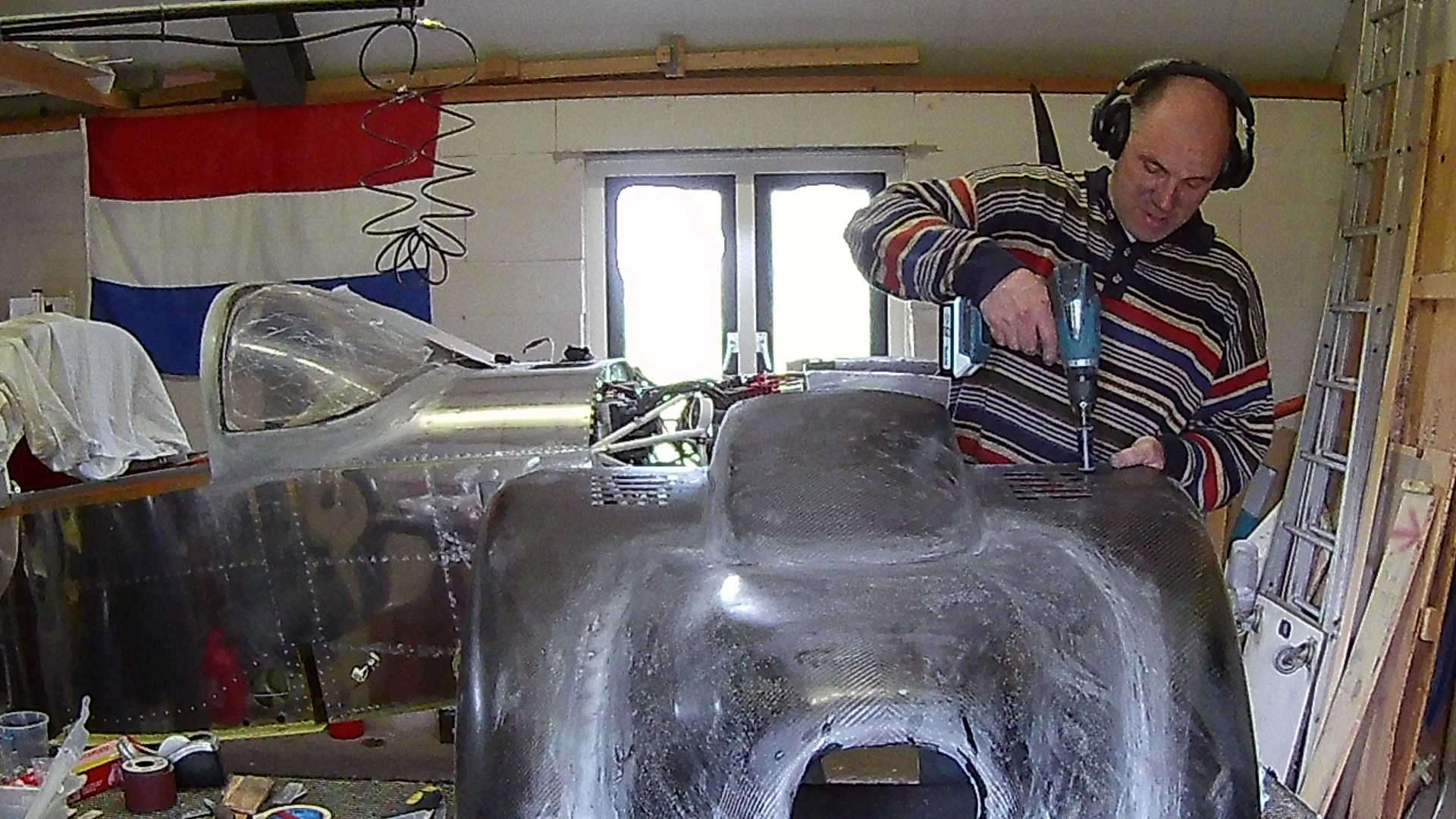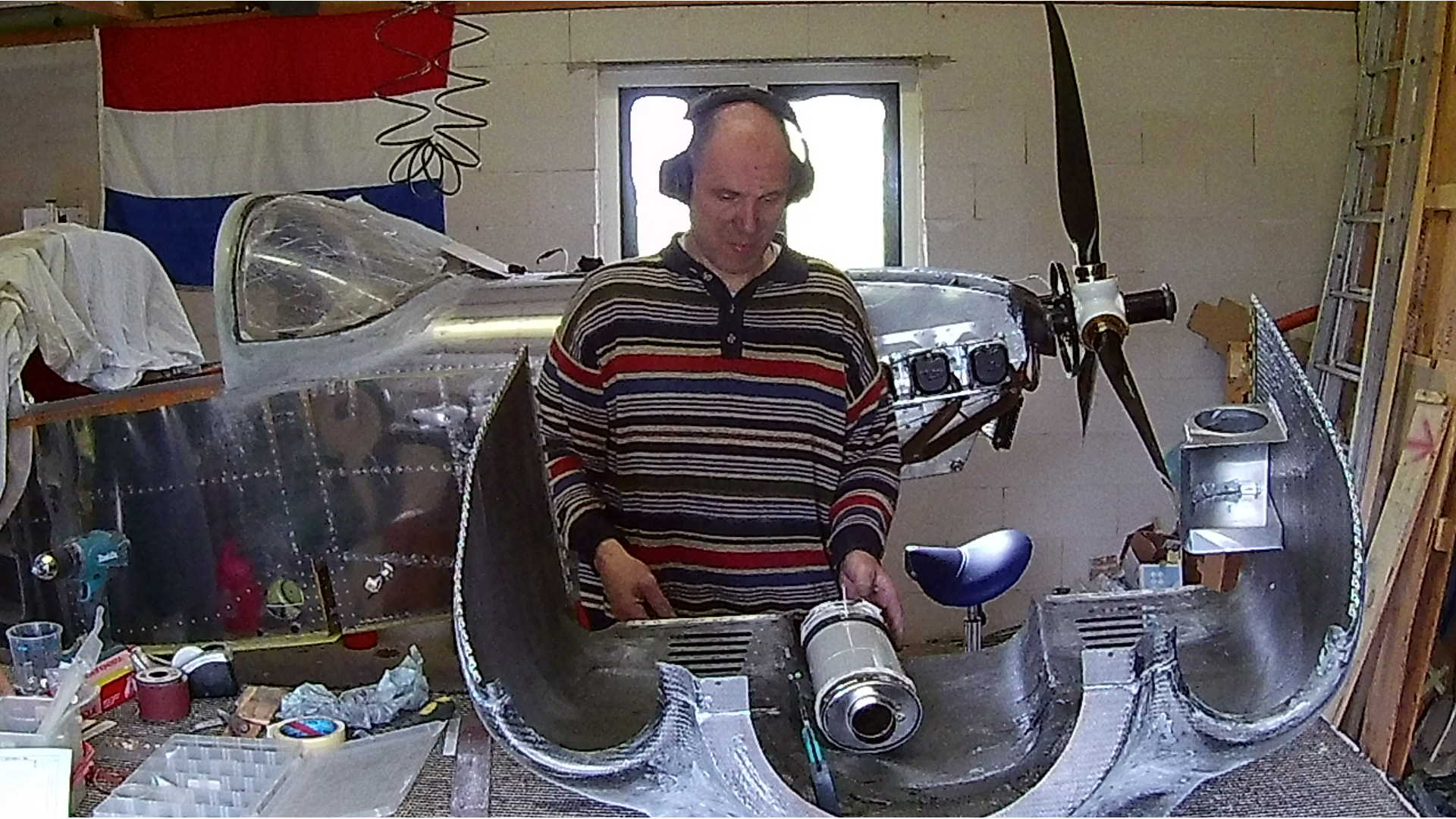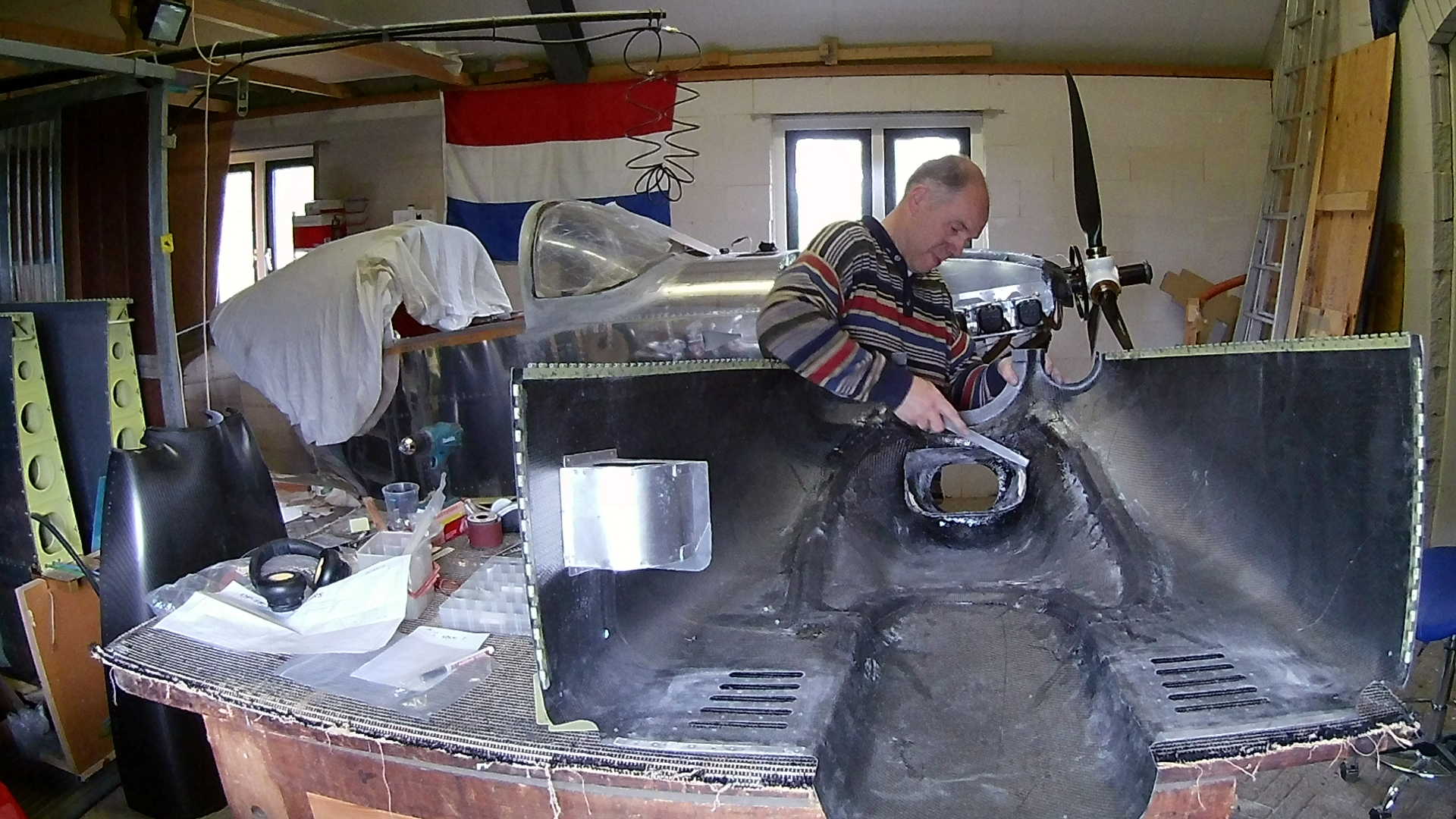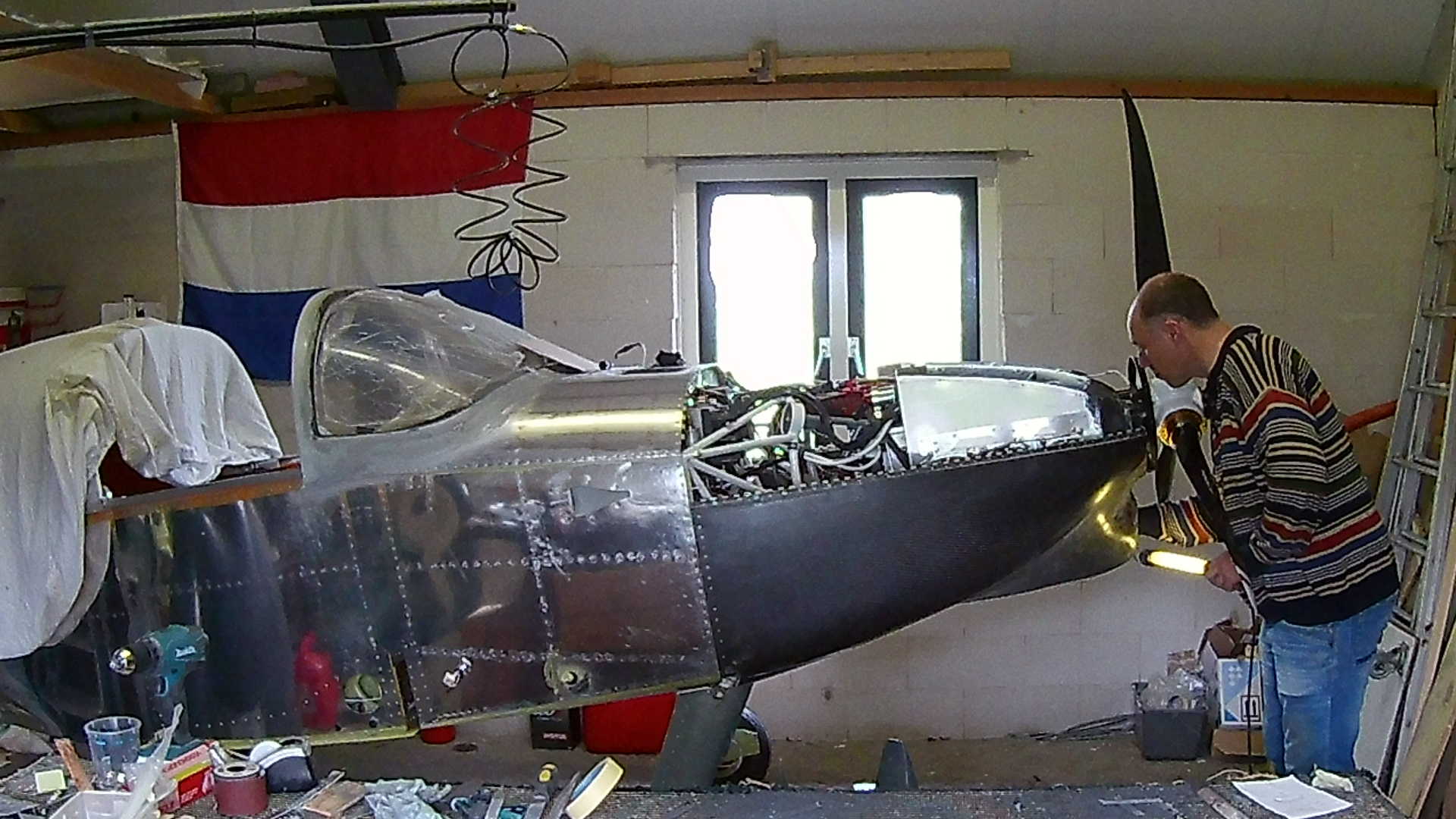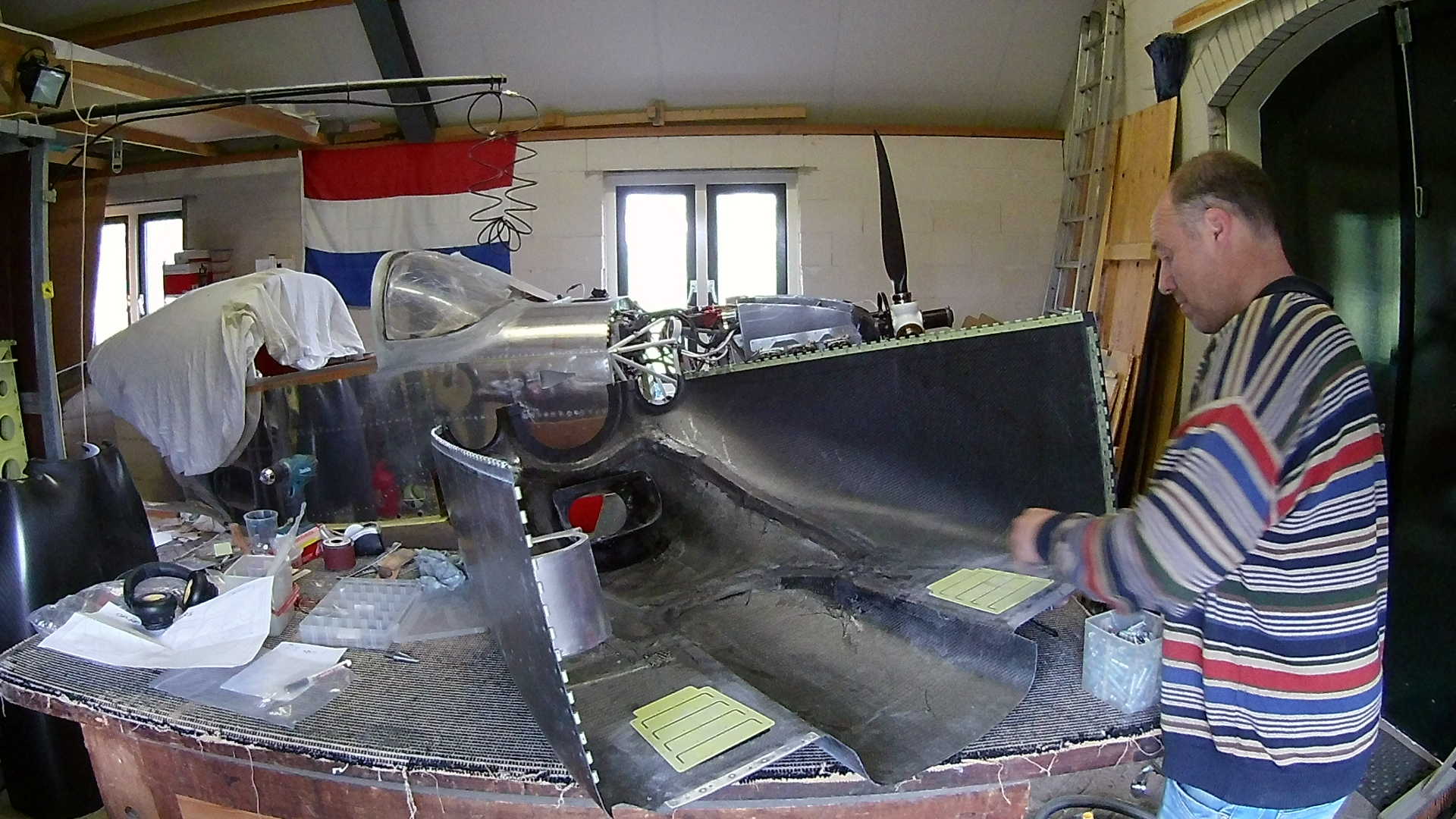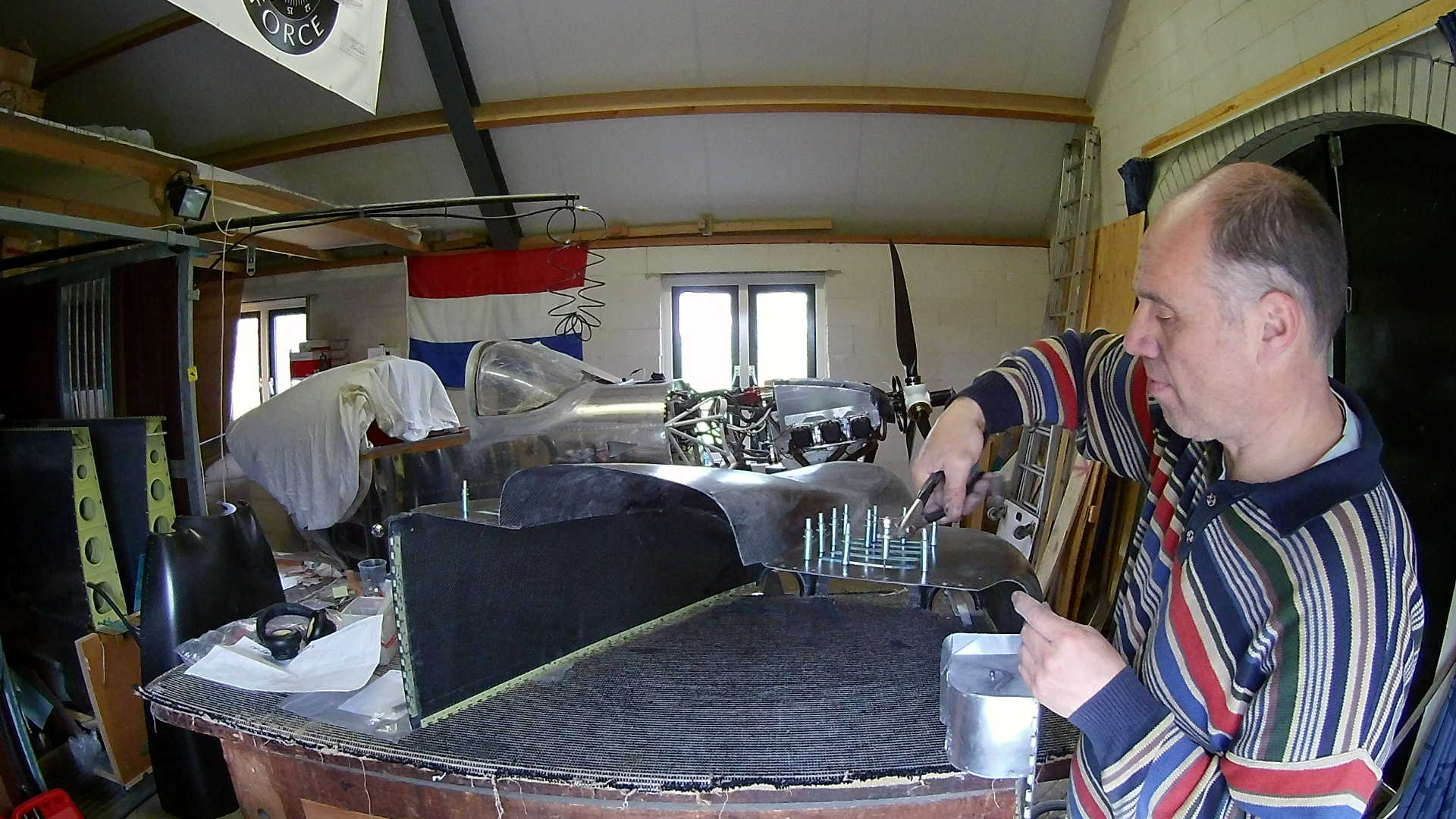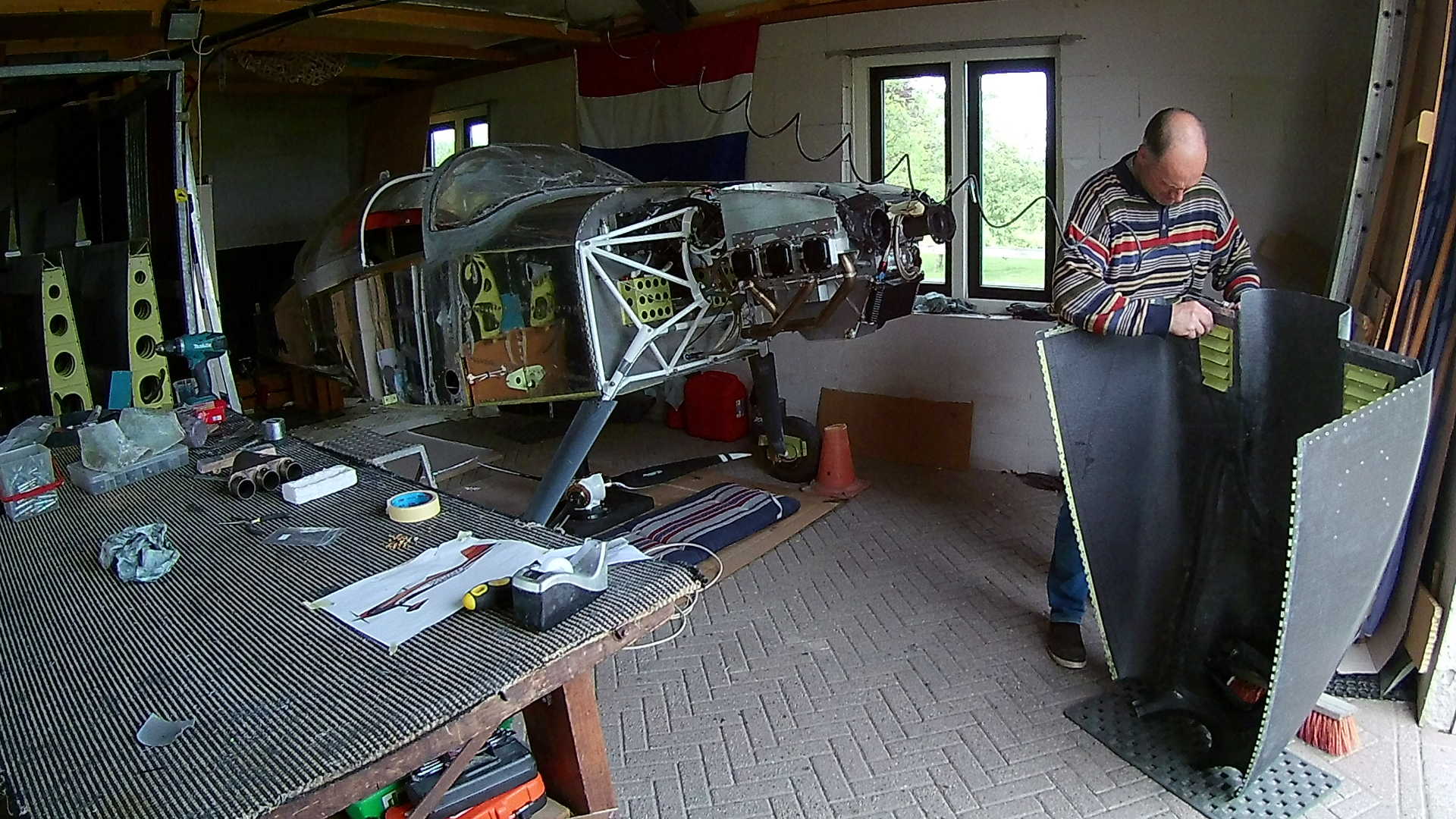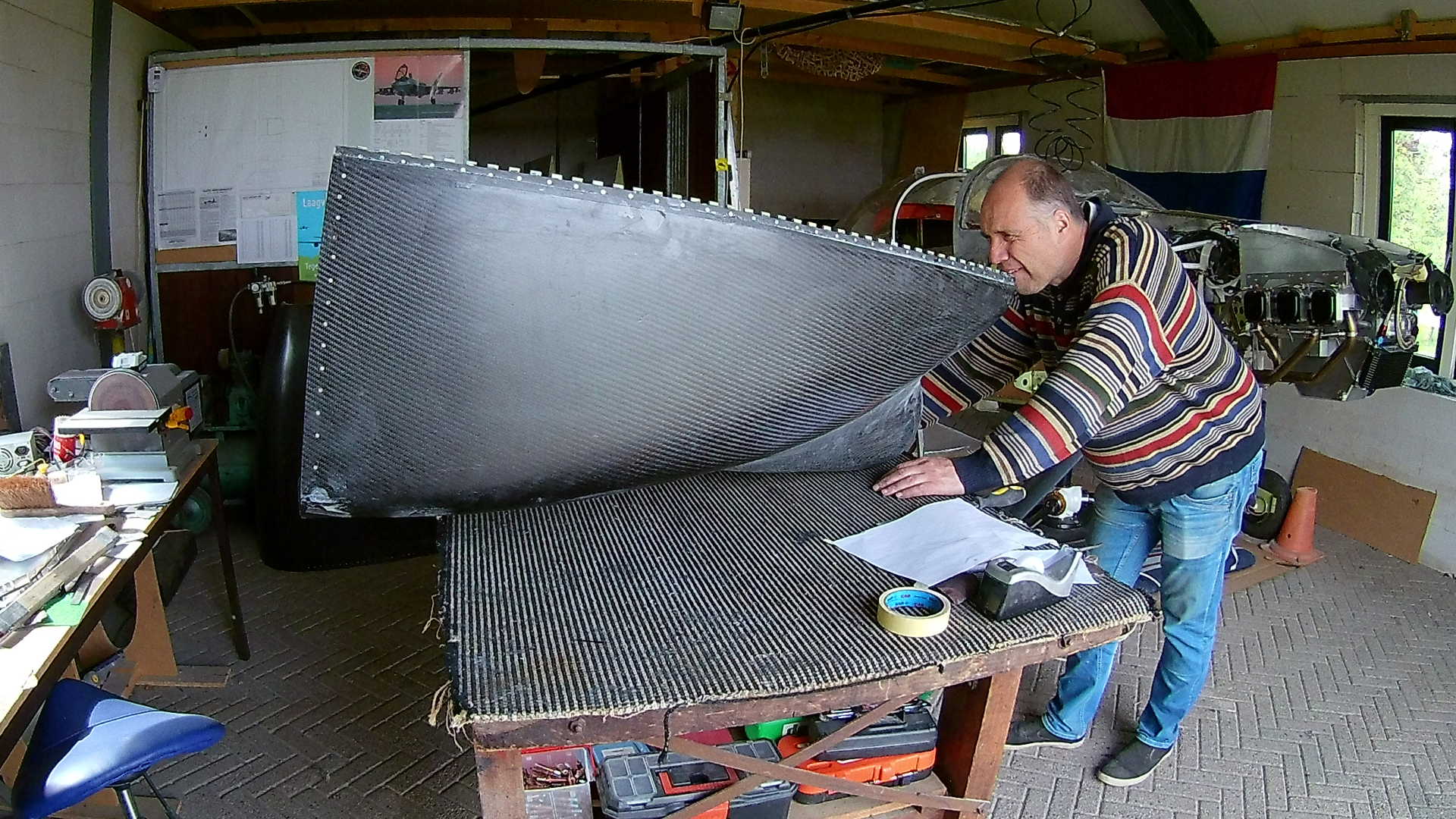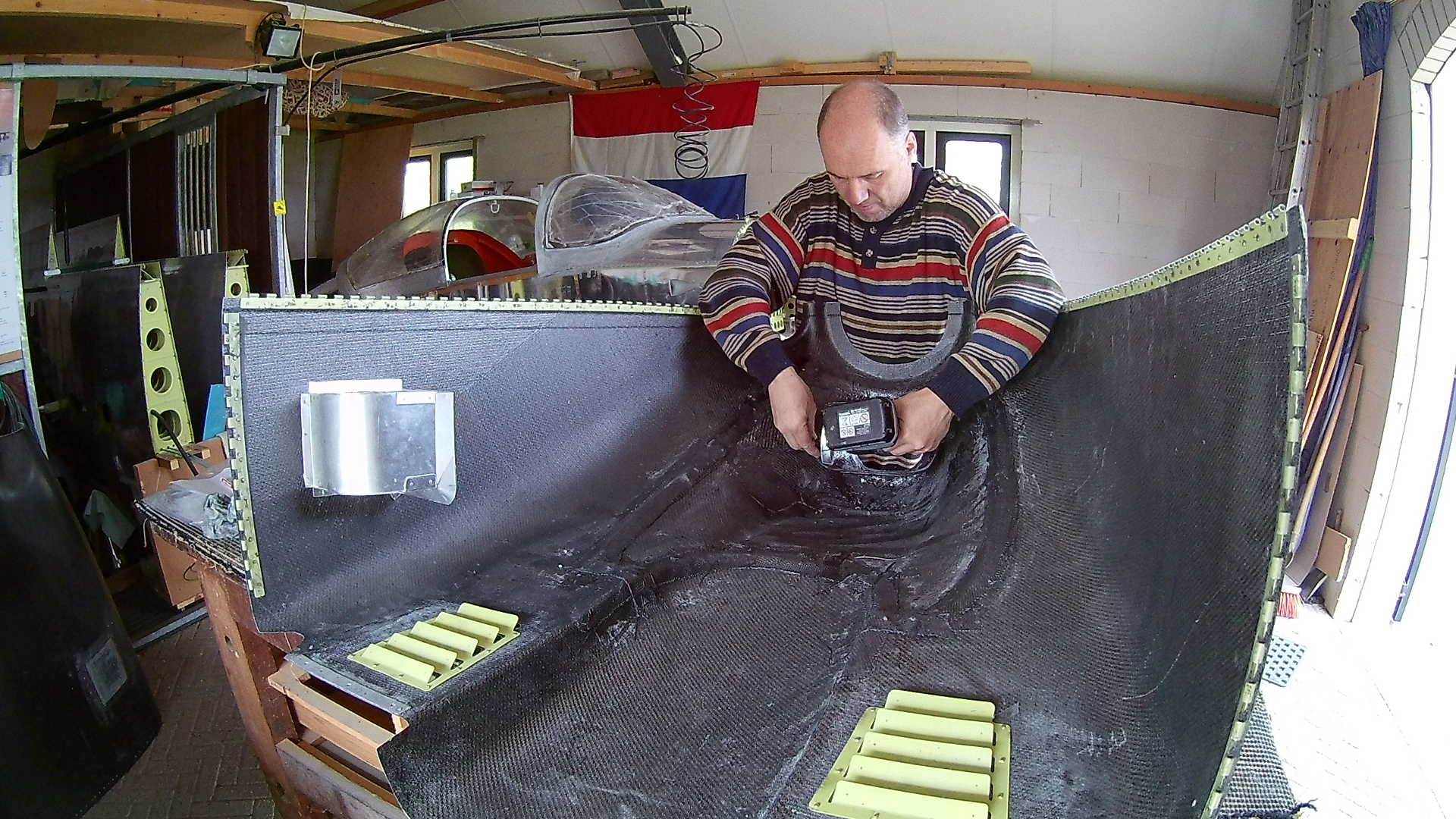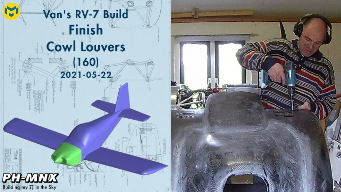The main structure of the Cowl is now ready. The fit between the top and bottom cowl is ok and the oil cooler air duct is complete. After measuring the surface area of the air inflow and the outflow, taking into account that the exhaust pipes are there, I figured that I need extra holes in the Cowl.
One solution is installing Cowl Louvers and I ordered them with the kit, just in case (this case!). I drilled big holes at both ends of the slits.
I use the Dremel to open up the slits by cutting between the holes. I don’t wear a respirator that much and I’m not a Covid-nut, but trimming Carbon is probably a great time to wear one.
Maybe I also should wear one during filing Carbon, but I really don’t think they are very comfortable, so … there’s that.
Anyway, filing the slits as close as straight as possible.
The final step is using sandpaper an a stick of wood to finish of the edges of the slits. As you can see I already picked up some Carbon dust on my cheeks.
The Cowl Louvers are riveted to the carbon cowl with flush rivets. So besides drilling the rivet holes, they also need to be counter sunk.
Apart from the Cowl Louvers, I was also measuring the optional mufflers. However, the sound of the engine is great and the mufflers too big, so I dropped that option.
My face starts to look like a miner, but instead of soot it is carbon dust (probably just as bad). Finishing of the oil cooler air duct, the trick is too keep some distance between the air duct and the oil cooler. The last half inch is filled with a silicone strip that is also used for the baffles. This provides a flexible fitting.
I’m checking the distance between the air cooler and the air duct, to see if the clearance is big enough.
Time to continue with the Cowl Louvers. We attach them to the cowl with Cleco’s to prepare them for the riveting.
Because of the ‘flaps’ on the inside you can only use the cleco’s on the outside.
Since the edge distance is too big, we can’t use the squeezer. So we use the rivet gun and bucking bar. Careful around the bend ‘flaps’. Maybe it was better to bend them after riveting.
Yip it looks great.
I installed the silicone strips with small Aluminum strips that hold plate nuts. You can’t directly rivet silicone, it will tear easily. Also you don’t want to use nuts here close to the propeller. So plate nuts is the best solution. It also provides some maintainability advantages.
Time: 6 Hours, Rivets: 0/0 (2021-05-19)
Time: 6 Hours, Rivets: 0/0 (2021-05-22)
